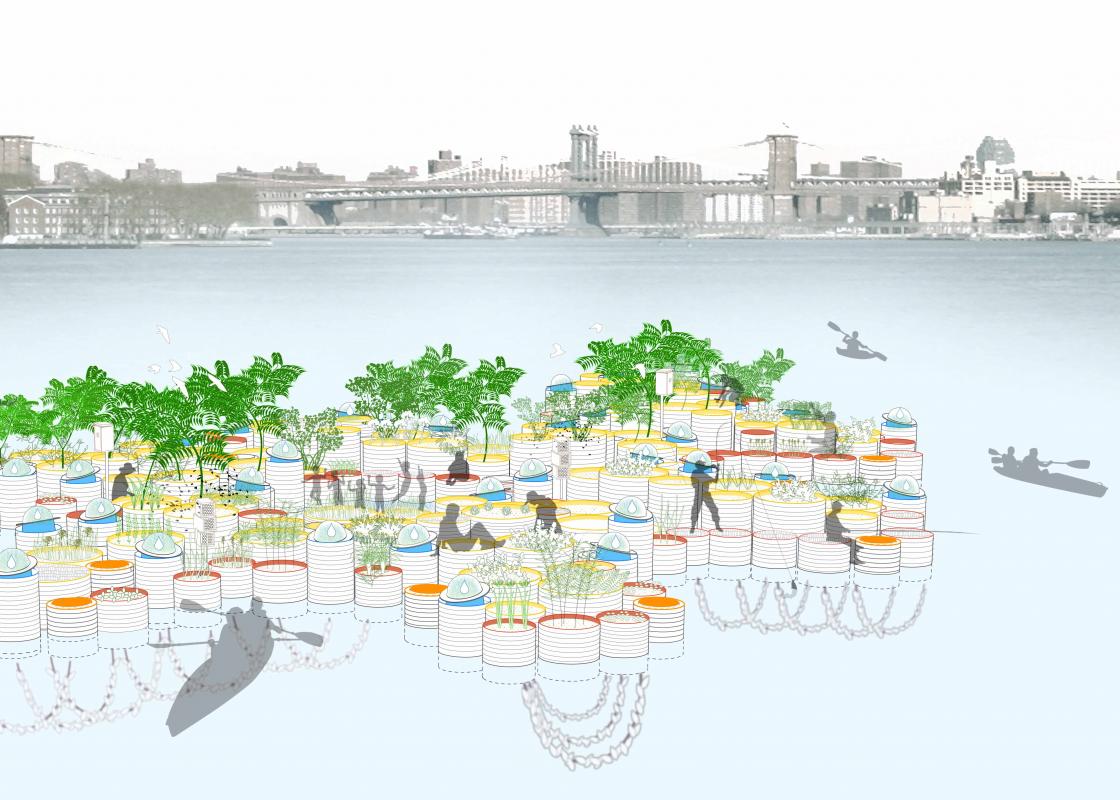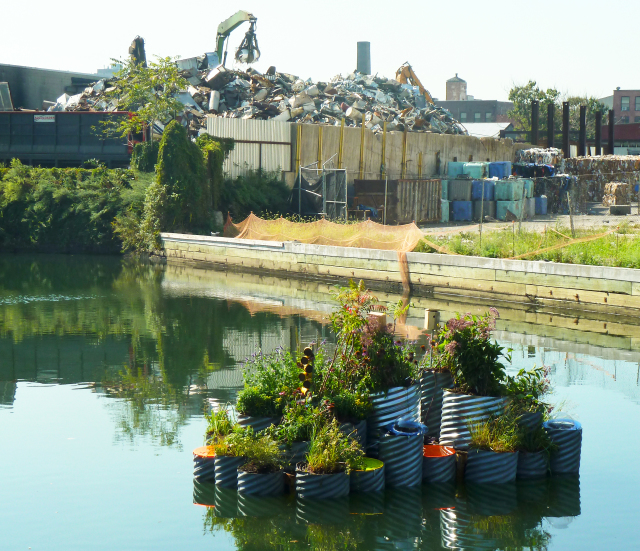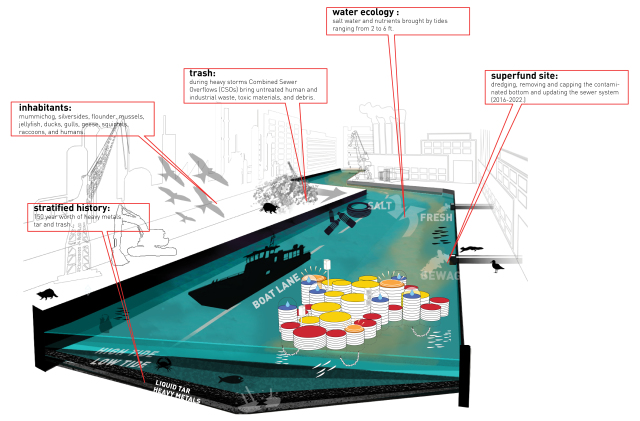Diana Balmori of Balmori Associates will lecture in Houston on Wednesday, February 17, for the Rice School of Architecture/Rice Design Alliance Spring 2016 series, Projective Infrastructures. The lecture will be held at 6 p.m. at The Museum of Fine Arts, Houston.
The Gowanus Canal in Brooklyn might be the most polluted body of water in the country. In 2007, students found traces of gonorrhea in an oily goo that was floating on its surface. Last year, the canal was confirmed to be carcinogenic. Last fall, Christopher Swain, an environmental activist, swam --- more specifically, he did the breaststroke to keep his head up out of the water --- its entire 1.8-mile length. (It was his second attempt; the first was cancelled because of rain, which pushes raw sewage into the canal.) Swain wore a full-body suit, heavy gloves and boots, a swim cap, and goggles, and his face was smeared with waterproof jelly. On his previous attempt, some of the water got into his mouth: “It tasted like blood, poop, ground-up grass, detergent, and gasoline,” he told New York.
A Superfund National Priority site since 2010, the Gowanus Canal will require more than $506 million and five more years, the EPA estimates, to be cleaned. The New York Times reports that there is a “black mayonnaise,” a thick deposit on the bottom of the canal, which “includes PCBs, asbestos chips, arsenic, copper, lead and mercury, as well as trash such as pieces of toilets and illegal guns.”
This is where Diana Balmori put a garden.
Balmori is Founder and Principal of Balmori Associates, an international urban and landscape design firm. “Of course when you’re there, evidence of how toxic [the canal] really is is ever present,” she writes in an email to OffCite. “But its beauty can surprise you.” Into this paradoxical landscape, the experimental side of her firm, known as BAL/LAB, launched GrowOnUs, a floating garden in September 2015. "This was more about the possibilities of the water, not the limitations of the land."
“Most of the plants are actually doing quite well,” Balmori writes. “Seaside goldenrod, for example, is thriving. Many of the grasses … are showing new growth. The one plant that did not make it … just couldn’t take the drought conditions we had near the end of last summer.”
Employing plastic barrels and steel culverts --- the very infrastructure through which pollutants have slimed down into the canal for 150 years --- GrowOnUs is a garden of 30 species of plants. The culverts, upended and lashed together like a raft, function like test tubes, where experiments with desalination, self-irrigation through condensation and evaporation, and phytoremediation (or the cleaning capabilities of plants) are underway.
"Given what we have done to water, air, soil, to their detriment," writes Balmori, "we need to experiment on ways to enhance them. This requires understanding our actions better by testing, and it also requires a different attitude from us towards them. We have new tools and with them we are trying to find better ways to interact with different elements and with living things."
As these experiments continue, Balmori envisions a flotilla of floating landscapes. Some of them could become economically sustainable, as well, growing herbs and vegetables that could then be sold to bars and restaurants --- or even the Whole Foods that backs up to the canal.
“We wanted to experiment with ways in which the island could be multifunctional," she writes. "Some of the other plants that do not directly interact with the canal water were chosen because pollinators such as bees and butterflies benefit from them (anise hyssop and Canada goldenrod, for example); others were chosen because they are plants that can be used to create natural dyes for fabrics (there is a cloth dying studio nearby).” Balmori says that the size of the structure can also reduce the impact of waves by up to 50 percent, and it is moveable. As sea levels threaten to continue to rise, one can imagine floating farms of these bobbing up and down the coast.
We often think of reclaiming materials or adaptively reusing structures, but BAL/LAB's work does this as well with urban landscapes --- and with experiences. Temporary installations like the one-day "Meditation Room" reclaim the horizon. "A Landscape Never Happens Twice," the winner of a "Cool Gardens" contest in Winnipeg, surprises with color, as the park is programmed to move in and out of contrast when brightly painted pavers, railings, and other hardscape becomes matched by the spring bloom of flowers.
As with GrowOnUs, one imagines how overlooked or ignored sites in Houston might continue to be similarly reclaimed and adaptively reused for agriculture, play, and beauty. It's already happening: the bayou greenways are just one example. Discovery Green is another. The demonstration wetlands of the new Buffalo Bend Nature Park, developed by Buffalo Bayou Partnership and designed by SWA Group, opened in the East End on the site of a landfill. The urban farm Finca Tres Robles occupies a former industrial site. Who knows what will be next? Maybe the Brio Superfund site in Friendswood becomes a forest of carbon-sucking trees. Balmori's work invites such speculation, and it encourages us to think about how we might bring back to life those sites in our cities that had been left for dead.












